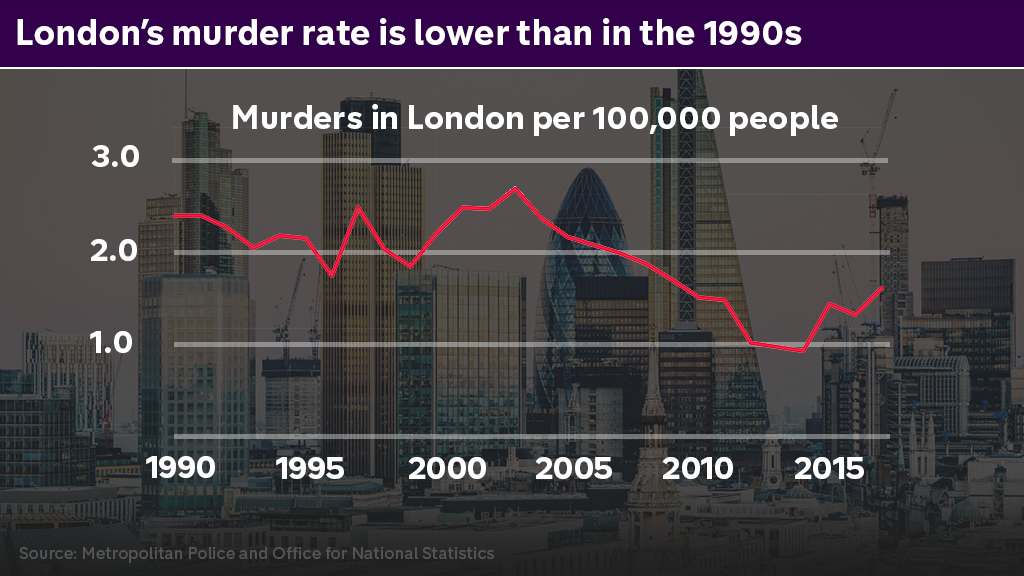For the first time in modern history, London’s murder rate is higher than New York’s. At least that’s what was reported last week.
But FactCheck has received new figures from the New York Police Department that suggest otherwise.
What did the early reports show?
The original reports were based on figures seen by the Sunday Times on or before 1 April.
They showed that in January this year, the New York Police Department investigated twice as many murders as London’s Metropolitan Police did.
But in February, the positions were reversed: New York investigators opened 11 new homicide cases, while the Met started 15 murder probes. March saw a rise in both cities’ murder count, with 21 and 22 homicides in New York and London respectively.
On that basis, there were widespread reports that London’s murder tally was higher than New York’s in February and March.
The two cities have roughly the same number of inhabitants (New York at 8.5 million, London at 8.8 million).
It was reported that, even accounting for the slight difference in population size, London’s murder rate was higher than New York’s in February and March.
What do the latest figures show?
It was perfectly reasonable for the Sunday Times and others to use the figures they had been shown on or before 1 April. That was the most up-to-date information available.
But they didn’t know that just a few days later, the New York Police Department would revise up its own estimate of the number of murders in the first three months of the year.
On 6 April, the NYPD told FactCheck that there were 22 murders in New York in January, not 18 as they’d previously thought. The same figures show that February saw 14 murders, not 11. The murder toll for March remains unchanged.
This is not that surprising: it can often take a few days or weeks to determine whether a death was suspicious, and until then, it won’t be included in the official list of murder cases.
When we combine those revised New York figures with what’s been happening in London, we get a slightly different picture to the one that’s hit the headlines over here.
We can see that in February, London suffered two more murders than New York (rather than three, as originally reported).
In March, the death toll was actually higher across the Atlantic than in the British capital.
By the way, the London figures we’re using for March do not include the deaths of two children whose bodies were found in Sussex for which the Met retains primacy over the investigation.
And of course, it’s possible that either police force could update their own figures again. But for now, these remain our best estimates.
New York is relatively safe
But even if the original reports had remained accurate, it’s important to remember that the Big Apple isn’t as dangerous as you might think.
In fact, with a murder rate of 3.4 homicides per 100,000 people, New York is only the 67th most deadly city in the US.
America’s most dangerous cities – St Louis, Missouri and Baltimore, Maryland – suffer murders at nearly 20 times that rate.

The murder rate in London is still lower than it was in the 1990s and 2000s
We should also keep in mind the fact that the murder rate in London is still much lower than it was in the 1990s and 2000s.

It reached a peak in 2003, when 204 people were killed. Compared to the population at the time, that meant London was suffering 2.7 homicides per 100,000 people. By 2017, that figure had dropped to 1.48 per 100,000.
And that’s still much lower than New York. In 2017, London saw 116 murders, while New York’s death toll was 292.







